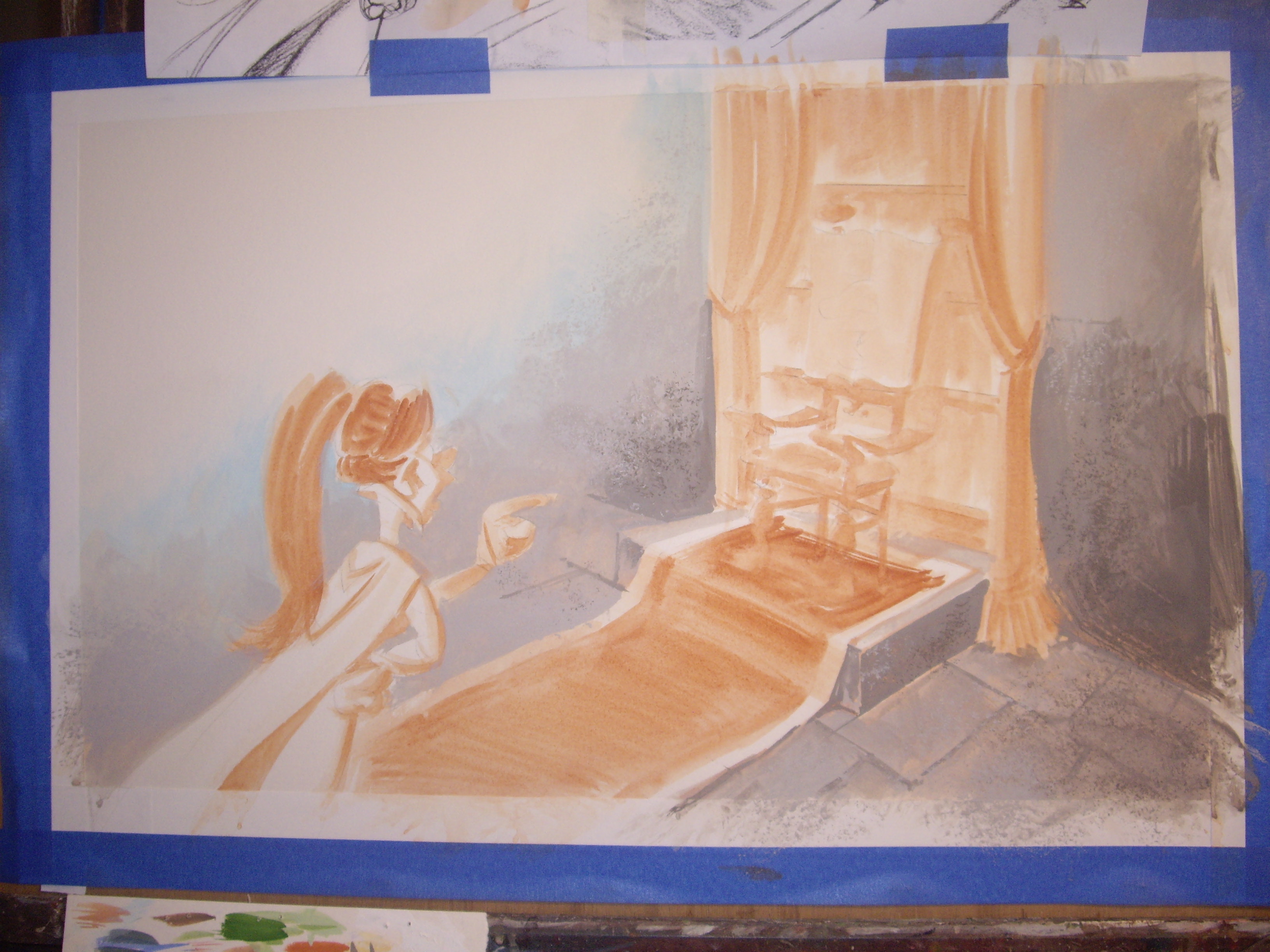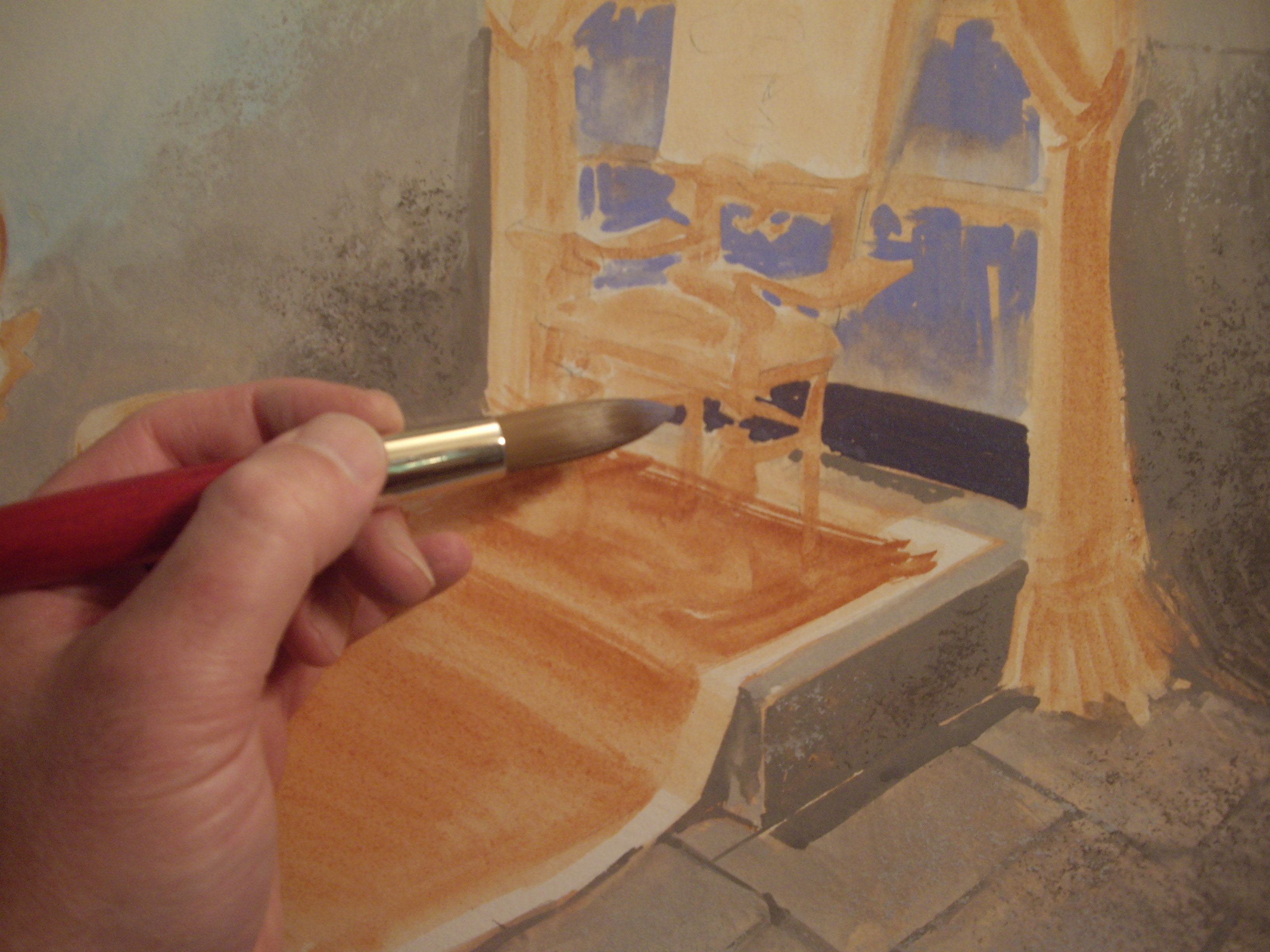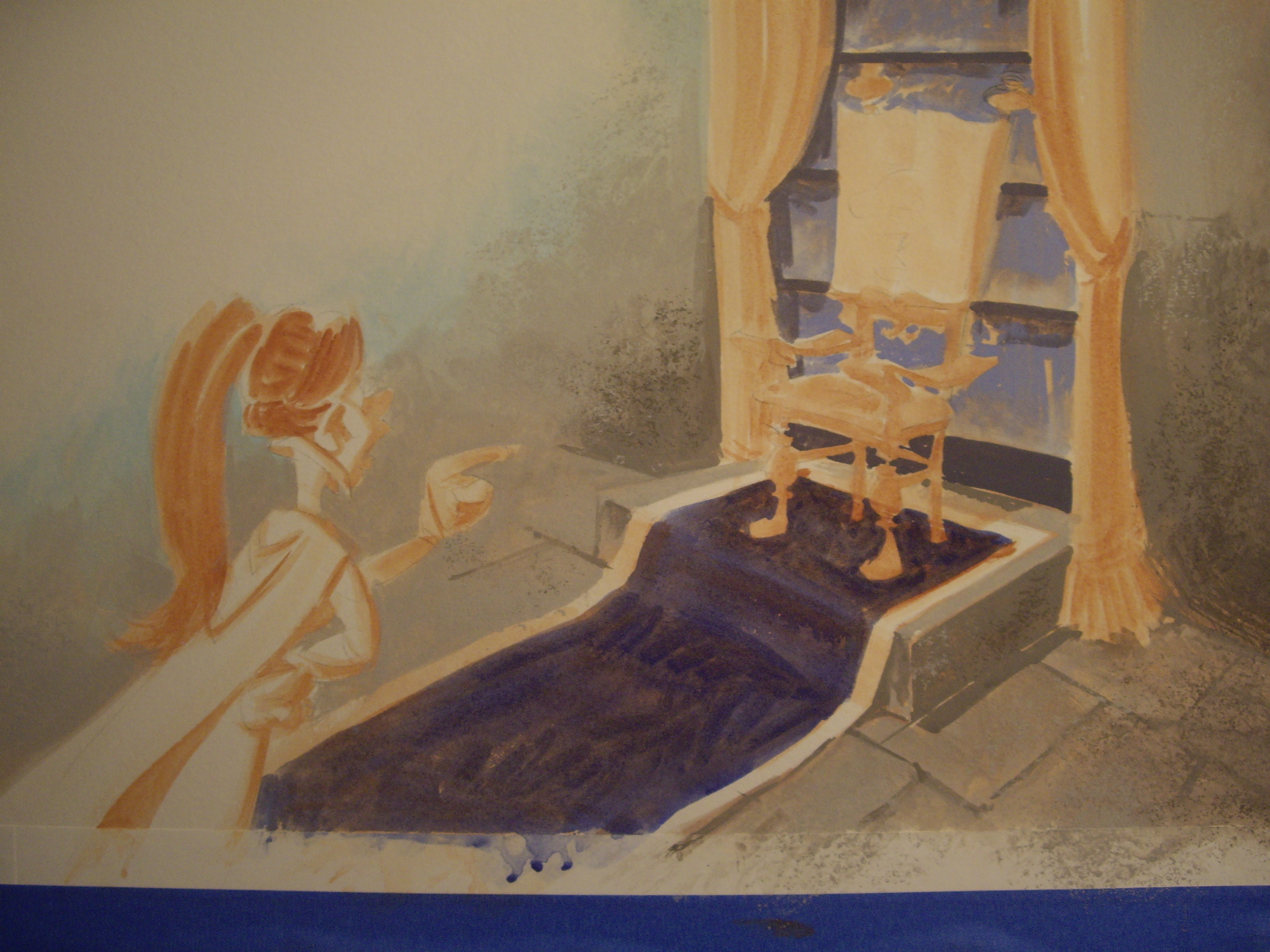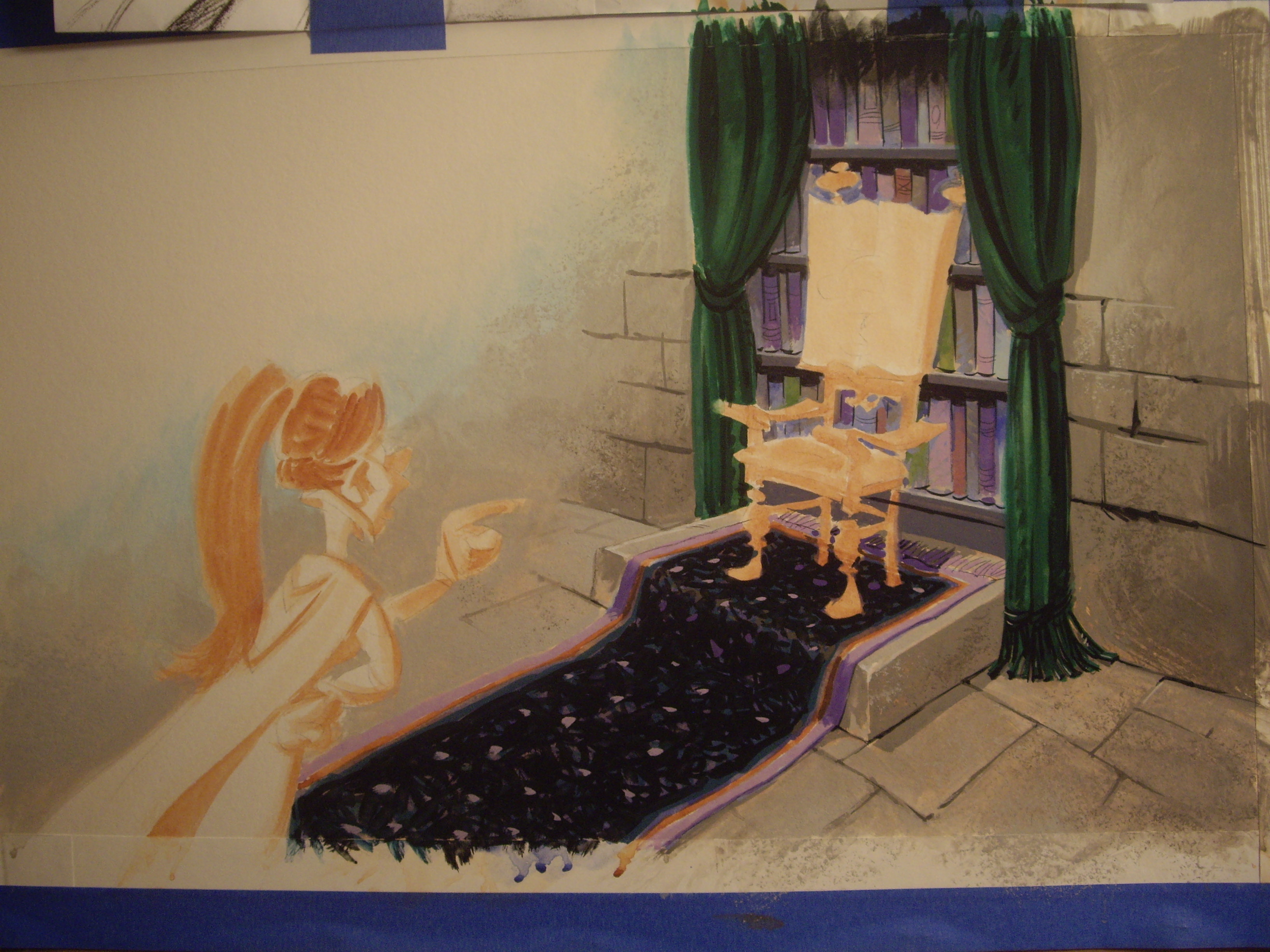Painting over the underpainting
Joanie asks:
I have yet another question if you don’t mind since you have been so kind to answer all my others! I understand the importance of an underpainting since it establishes all the values before you add the color but when you are painting over your underpainting how do you keep all the colors from not mixing into each other and creating mud? Thanks!!!
John answers:
Ah, that’s the tricky part! If you’re using gouache, you need to exercise a great deal of restraint while laying down those colors—once your brush makes the stroke, STOP! Don’t give in to the temptation to blend and scrub and fuss. Gouache is a straightforward medium. There’s a point at which, once crossed, the painting looks overworked.
But that’s my technique. If you want to have the option to really work the paint without disturbing the underpainting, you might try spraying workable fixative on the underpainting once it’s dry, before you apply the top colors.
More on underpainting here.












